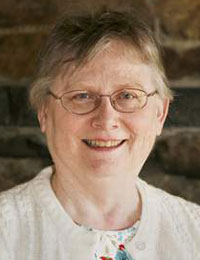 Okay, so now we have a pile of bricks. Are we ready to start building our genealogical house? No. We need to know what the house is supposed to look like (blue prints) and the regulations about how the house should be constructed (codes). If we were really building a house, of course, this is where we’d hire an architect and a contractor, but the fun of genealogy is in doing-it-oneself, so we have to educate ourselves about construction.
Okay, so now we have a pile of bricks. Are we ready to start building our genealogical house? No. We need to know what the house is supposed to look like (blue prints) and the regulations about how the house should be constructed (codes). If we were really building a house, of course, this is where we’d hire an architect and a contractor, but the fun of genealogy is in doing-it-oneself, so we have to educate ourselves about construction.
The best way to learn how to draw the plans for your house is to study good genealogical examples. Develop the habit of reading articles in The New England Historical and Genealogical Register, The American Genealogist, The New York Genealogical and Biographical Record, The Mayflower Descendant, Rhode Island Roots, and other periodicals available on americanancestors.org to become familiar with genealogical structure, composition, and presentation, even if a given article does not deal with your direct ancestors.
As for “building codes,” there are a great many books, resources, and courses available – so many that they can easily become overwhelming. Start with the resources at americanancestors.org and in the posts on vita-brevis.org. Another good starting point is with The Board for Certification of Genealogists’ Genealogical Proof Standard. The pursuit of genealogy is just one never-ending continuing education program.
But for this post, let’s get back to that pile of bricks. Building codes are developed for reasons of safety, and there are penalties for ignoring them. We won’t injure anyone with our bad construction, but we can cause a lot of inconvenience to others if we publish bad information, and everyone drives wayward nails – when I finish writing this post, I will be correcting my error in the Early New England Families sketch on Nathaniel Morton, where I misidentified, through inattention, the mother of the Joseph Dunham who married Mercy Morton.
All of this brings us to our roles as “inspectors” of our own work. Not only do we need to proofread all of the data we enter, we need to critically “prove” the content against industry codes. That can be a chore and a challenge, but if you approach this stage as your own “Devil’s advocate” and try to disprove your conclusions, you’ll usually end up strengthening your whole genealogical house.
In my next post, I’ll talk about some of the “red flags” our “Devil’s advocate” is waving.
Share this:

About Alicia Crane Williams
Alicia Crane Williams, FASG, Lead Genealogist of Early Families of New England Study Project, has compiled and edited numerous important genealogical publications including The Mayflower Descendant and the Alden Family “Silver Book” Five Generations project of the Mayflower Society. Most recently, she is the author of the 2017 edition of The Babson Genealogy, 1606-2017, Descendants of Thomas and Isabel Babson who first arrived in Salem, Massachusetts, in 1637. Alicia has served as Historian of the Massachusetts Society of Mayflower Descendants, Assistant Historian General at the General Society of Mayflower Descendants, and as Genealogist of the Alden Kindred of America. She earned a bachelor’s degree from the University of Connecticut and a master’s degree in History from Northeastern University.View all posts by Alicia Crane Williams →